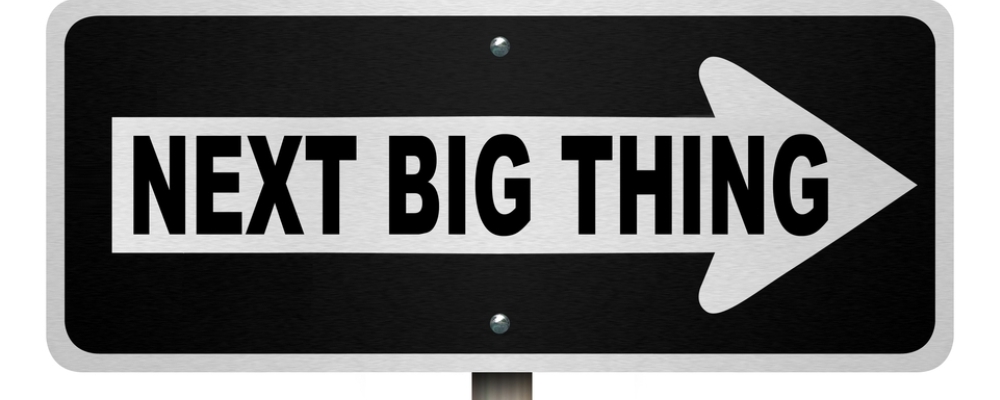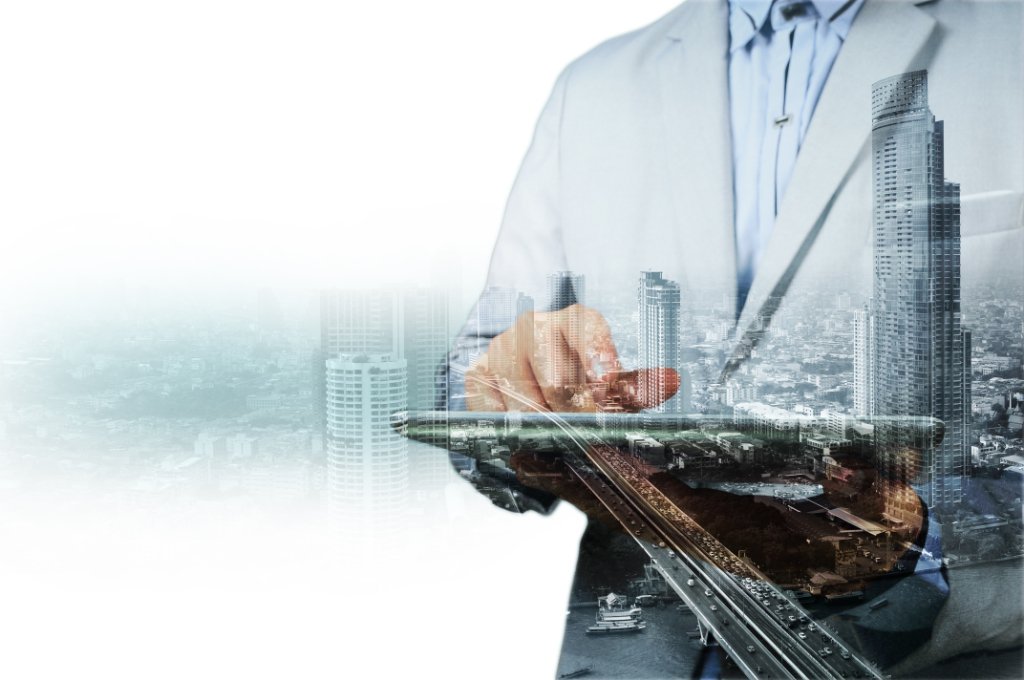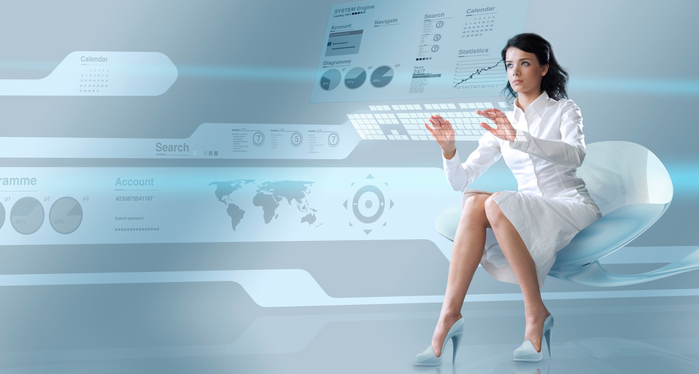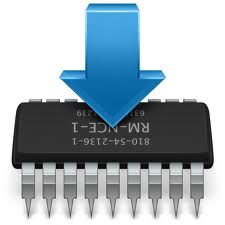As the curve surpasses the dawning phase and steers into the acceptance phase for the next generation of technologies, enterprises have splurged billions in R&D in an attempt to capitalize upon leaner business processes. Gartner predicts that 85% of customer interactions will be automated in the next decade, while businesses have to detach from sluggish processes, reincarnate their digital consumption and ultimately make room for disruptive technologies. Be it the explosive success of the Bitcoin or the unavoidable e-commerce dependency upon Bots, organizations both big and small want to catch up with the impatient trend. While hundreds of use cases can back the claim, here’s a quick glance at the 4 highly anticipated emerging technologies that are set to change the world.
Augmented Reality
The AR swarm will hit the revolution by 2021, when most of our experiences will be closely knit between the physical and the digital world. Suffusing the access to digital assets in the physical world, Augmented Reality is empowering enterprise zest for lessened hardware followed by an array of business perks to count on.
From designing products to showcasing them in events without actually using the physical products, automobile giants are already offering a virtual glimpse of the vehicle using Microsoft’s ambitious device HoloLens. That is, customers can have a near to real experience of the interiors of a car. Furthermore, the market’s exponential growth of nearly 55% over the next 5 years will extend virtual demonstration capabilities to Real Estate where consumers can take a quick virtual tour of the apartments. Moreover, the device aims to provide perfection in handling surgical instruments at the exact angles so that critical surgeries could be commenced remotely.
As of now, hundreds of Augmented Reality companies (both startups and corporate) account for a market cap of 27 Billion USD. Breakthroughs are on the way!
Artificial Intelligence and Cognitive Computing
“While artificial intelligence is about solving complex problems or analyzing patterns in data to bring some relevant insight, cognitive computing is about solving problems the way humans do, that is, by learning, reasoning and adapting to it, combining these two can provide enormous capability for us to execute tasks far more accurately and safely than ever before” says Kumar T, an expert in AI and blockchain currently researching on bringing the two together for industrial solutions. IBM has clarified the difference between Cognitive Computing and AI. While both are driven by the same fundamentals of Machine Learning, Neural Networks, and Natural Language Processing, Cognitive takes a step ahead in interacting naturally with humans. Bots, for example, are the best applications of Cognitive computing that use analytics from AI to process volumes of data. As organizations plunge at conceiving innovative applications to unlatch Big Data, 2021 will get more exciting.
As per PWC, 72% of surveyed enterprises have termed it as a business advantage and confirmed significant R&D this year. Surely, Predictive Thinking capabilities powered by Cognitive AI have proven advantages, while IBM’S ROSI tentatively known to be the world’s first robotic Gemologion, Budget, Size) and further processing it with deep permutations. Such accurate and instant product finding is a rage in the online community, and more e-stores are following up.st is an excellent use case. As an integrated AI platform to an online store selling diamonds, ROSI helps users decide upon the most appropriate designs using input data (Shape, Occasi
As per MIT, more than 80% of giant corporations want to experiment with AI and enhance their strategic engagements and resolve gaps in Prescriptive Analysis.
The Backscattering Technology
Wi-Fi backscattering is a low-power communications technology that uses radio frequency (RF) signals as a power source and reuses the existing Wi-Fi infrastructure to provide RF-powered devices with Internet connectivity.
A breakthrough in wireless communications, Backscattering is being used to power sensor devices and eliminate the need to have any inbuilt batteries at all. As the RF signals are selectively reflected, they are known as the Backscatters that create a pattern for strong and weak signals. Subsequently, relatively lower bit rate network and lessened power requirements have made them a preferred choice for streaming IoT networks. One such example is the Cliot – a self-charging printable tag draws power from EM waves from either the cellular networks or the Wi-Fi waves .
Developed on the SOC (System On Chip) principles, Cliot can be printed off by different brands instantly thereby making it highly scalable and cost-effective. Conceived by DiscoveryIoT, such powerless transmission is disruptive to enhance IoT network’s reachability in areas struggling with low bandwidths. Moreover, the age-old problem of lack of accurate sales data has led to many products on the market shelves surpassing their expiry dates and ultimately compounding to sub-optimal expenditure. Cliot helps controlling the inconsistency by delivering real time actionable insights to product manufacturers and brands.
Blockchain Finance – Distributed Ledger and Smart Contracts
Moving over Bitcoin, the first application built on the technology, there’s a swathe of innovative projects lined up while banking alone will be investing 300 million USD this year. Ripple, for example, confirmed 100+ financial institutions as a part of their long-term mission to establish a decentralized global exchange network, while Fintech giant R3 has developed a payments mechanism enabling international transfers of fiat currency, instantly. However, the business temptation for faster and leaner processes has made Blockchain driven finance applications even more imperative.
Know Your Customer (KYC) is an essential financial requirement but suffers from highly time-consuming manual undertaking and due diligence. Blockchain resolves this redundancy by providing a single source of ID and letting banks directly exchange KYC documents thereby abbreviating costing, automating account opening without disturbing the data privacy of client and banks.
Moreover, making it impossible to alter data, financial institutions can rely upon the transaction ledger as the ultimate audit trail and that no separate auditing of transaction flows is needed.
As of now, Blockchain investment has a meteoric rise to I Million USD in 2017 which will gradually grow to 20 Billion USD in 2024.
What The Future Holds?
Each one of these technologies will spread to more markets and thus firms engineered by insights will outperform all others. There’s a massive overhaul on its way with hundreds of many more technologies competing for that crucial space.
Sanro Mathew is a science and technology enthusiast with a passion for writing.He currently writes about emerging technologies like IoT and Blockchain and has contributed to various tech publications. Sanro is a graduate with a major in Aerospace and occasionally finds himself drawn to reading the theories of Physics.




















































































































































































